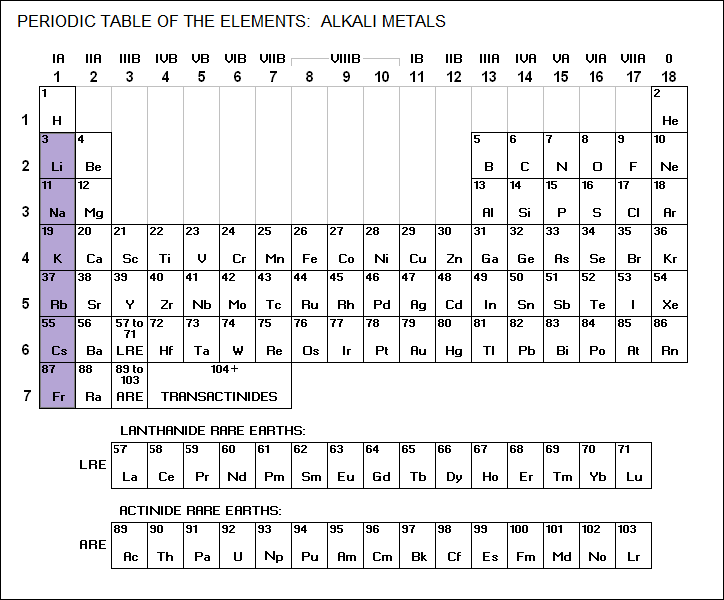
* Sodium is a member of the reactive alkali metals family:

____________________________________________________________________
SODIUM / Na / 11
A soft, silvery-white, highly reactive metal. The symbol "Na"
comes from the Latin "natrium", meaning "soda". Only one isotope
is found in nature, Na<23/11>, which is stable.
atomic weight: 22.989768
abundance: 6th
density: 0.97 gm/cc
melting point: 98 C
boiling point: 883 C
valence: 1
____________________________________________________________________
Sodium is heavily produced, at the level of hundreds of millions of tonnes a year. Most production is in the form of table salt (NaCl), which is actually more heavily used as an industrial feedstock than as a food seasoning or preservative. While traditionally salt was obtained from underground salt deposits, it has been also obtained by the evaporation of sea water on a limited basis for a long time, with this approach becoming more important since the stores of salt in the oceans are effectively undepletable.
NaCl is used to produce chlorine gas; sodium carbonate (Na2CO3); and sodium hydroxide (NaOH), better known as "lye". Sodium carbonate is used to make glass, as a part of the processes used to produce detergents and metals, and as "baking soda". Lye is a caustic, used in industrial processes and for clearing drains. Tens of thousands of tonnes of sodium metal are also produced each year; since it is so reactive, the metal is worthless as a structural material, but it is useful as a feedstock for many chemical synthesis processes.
